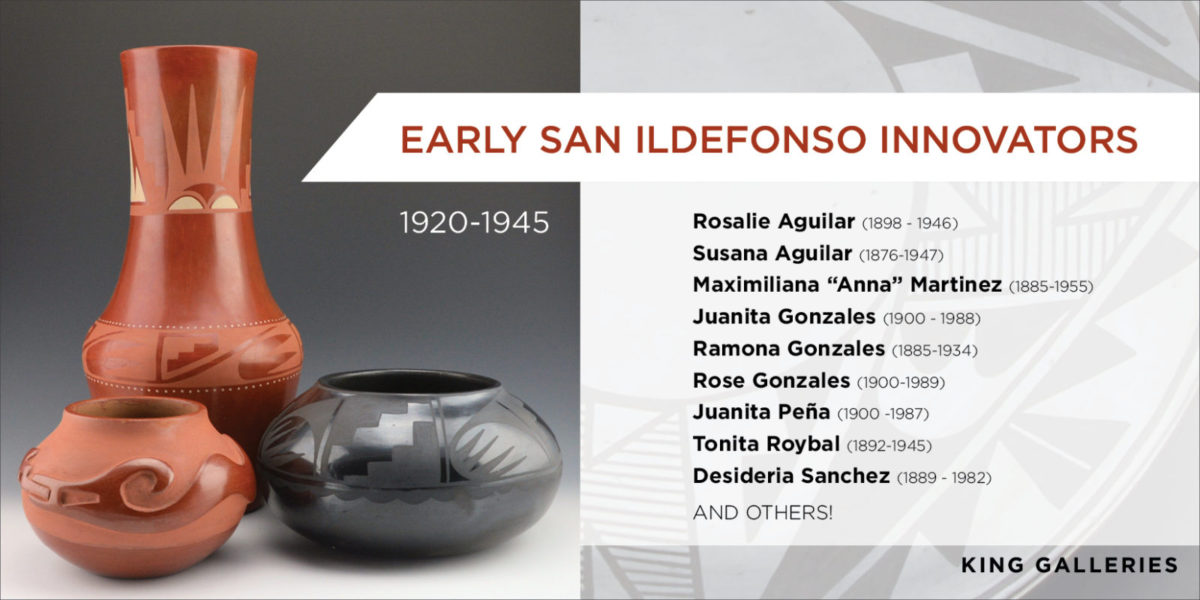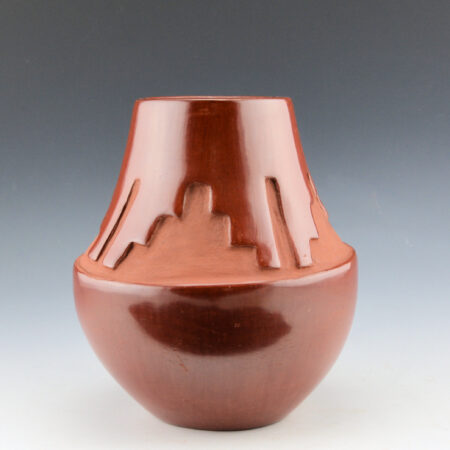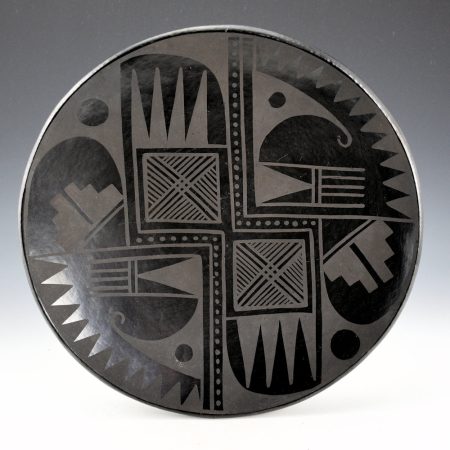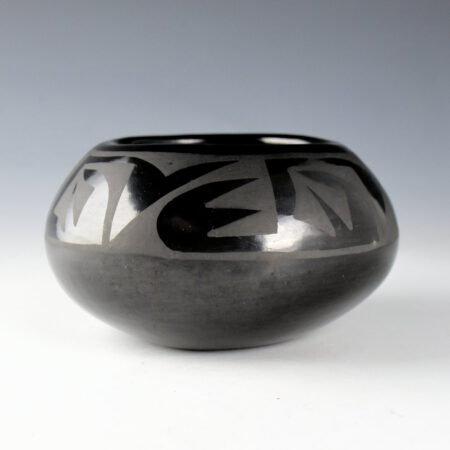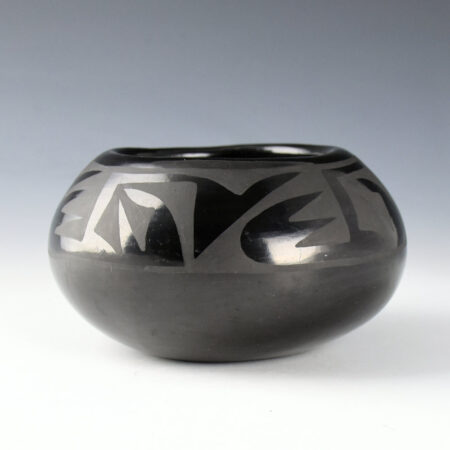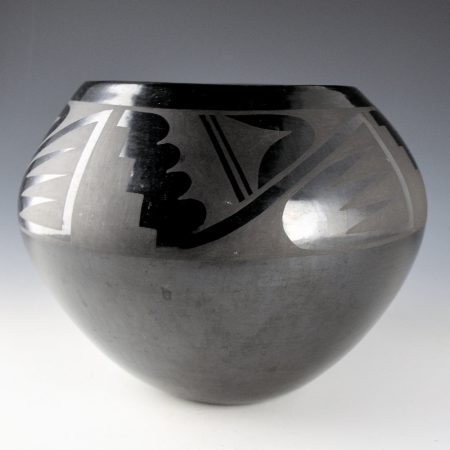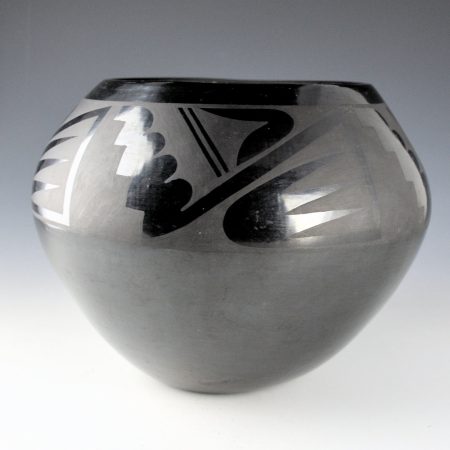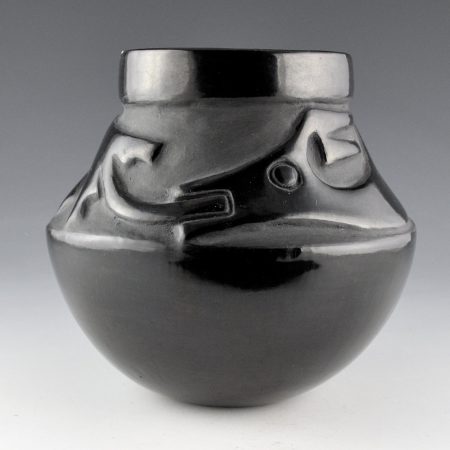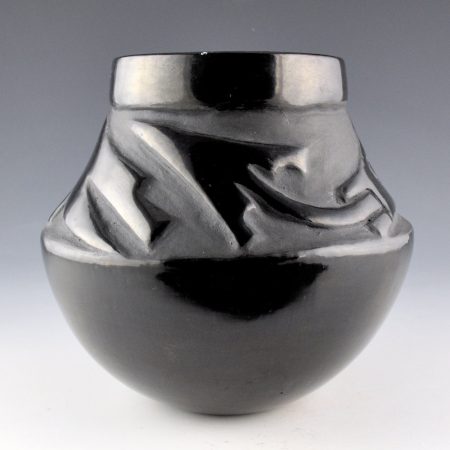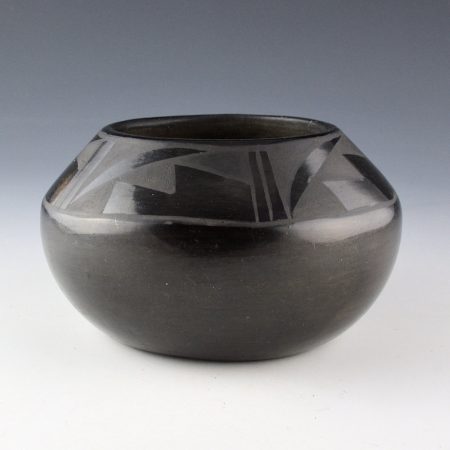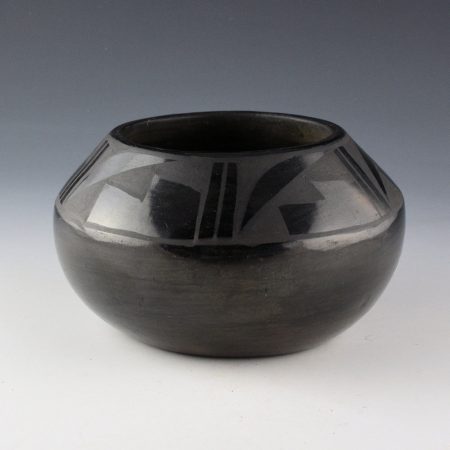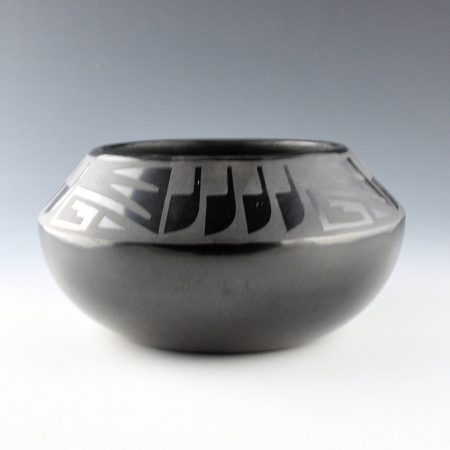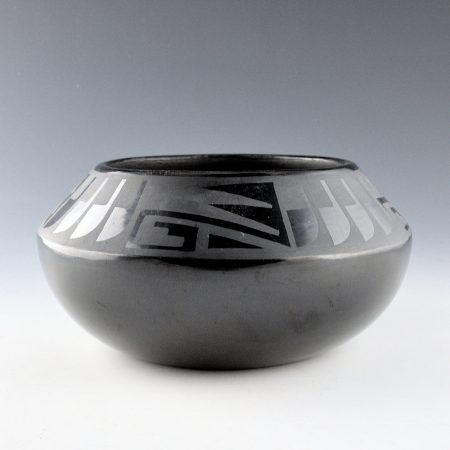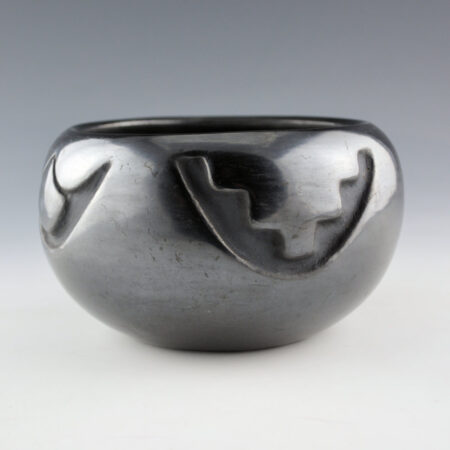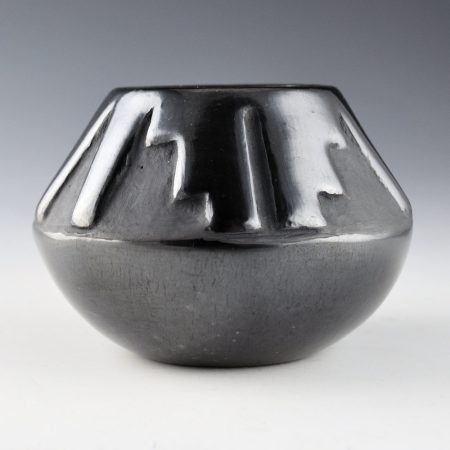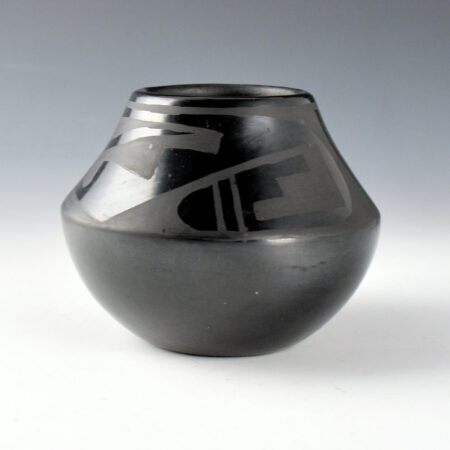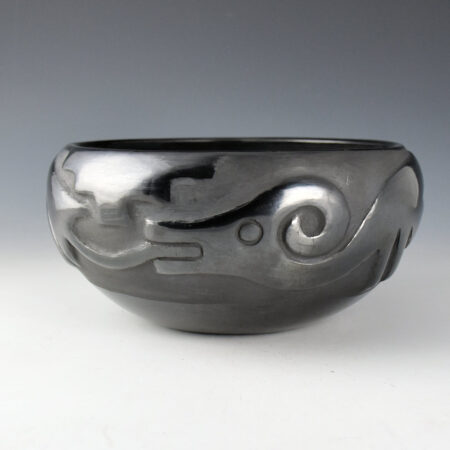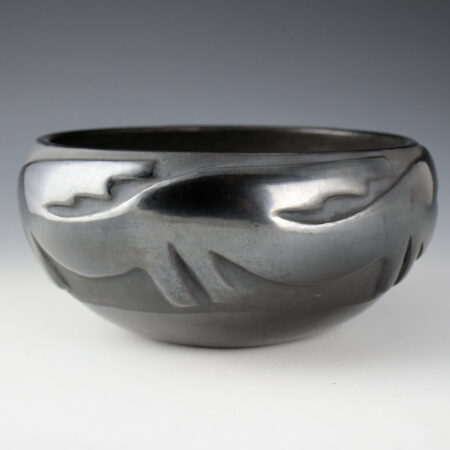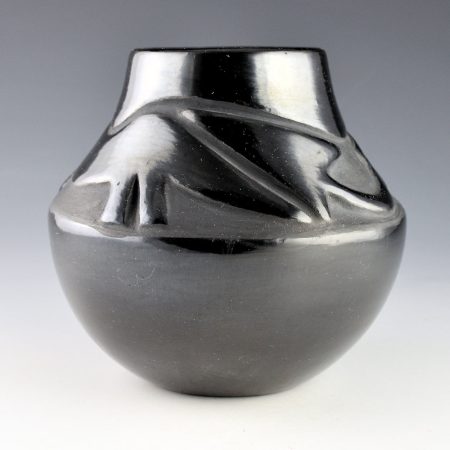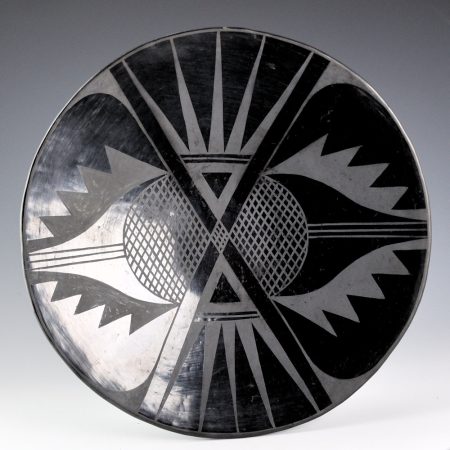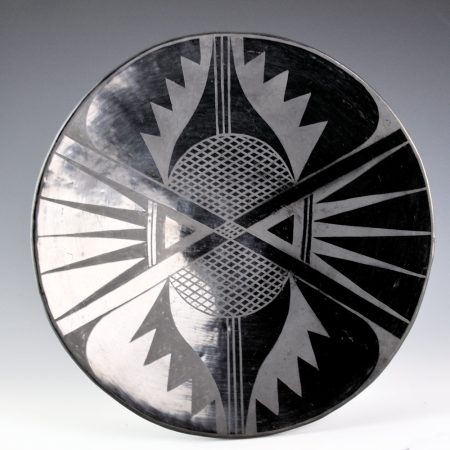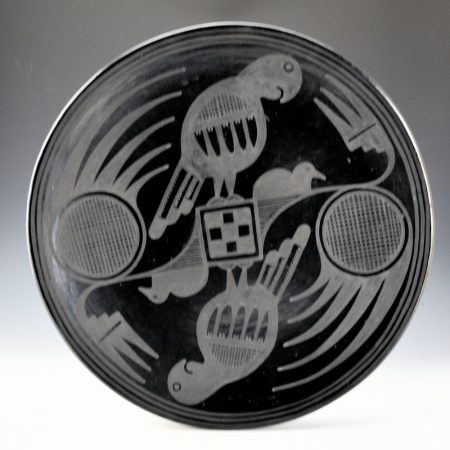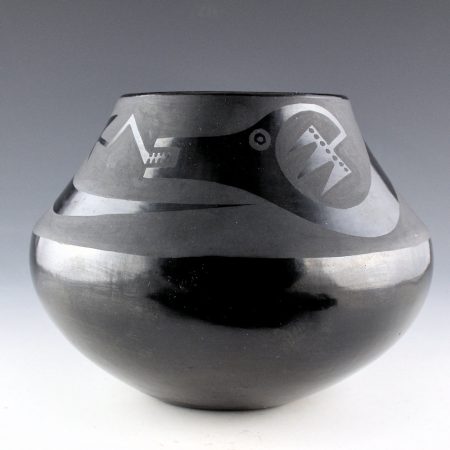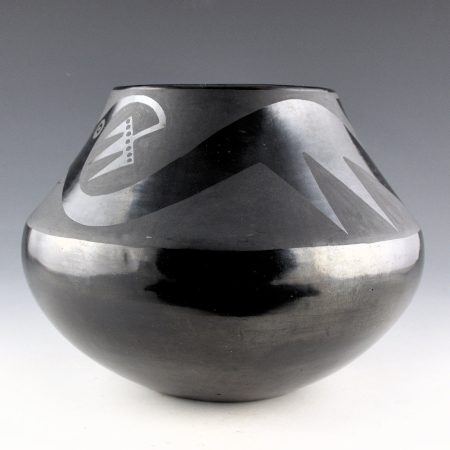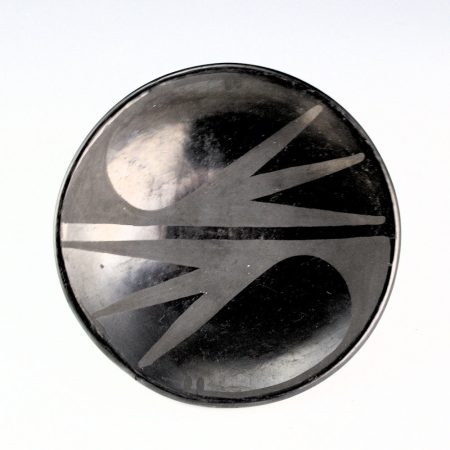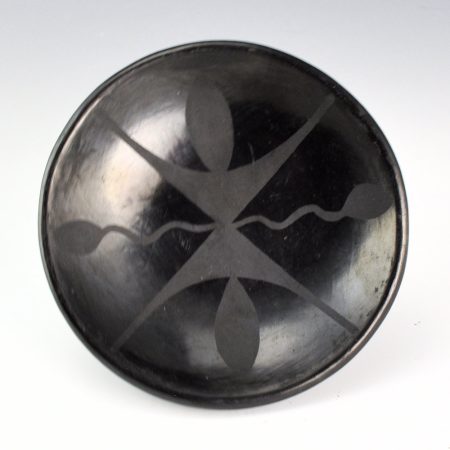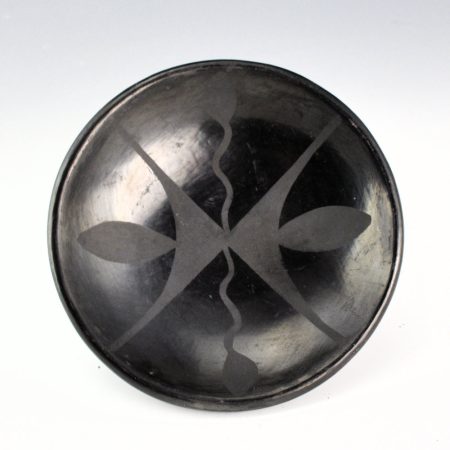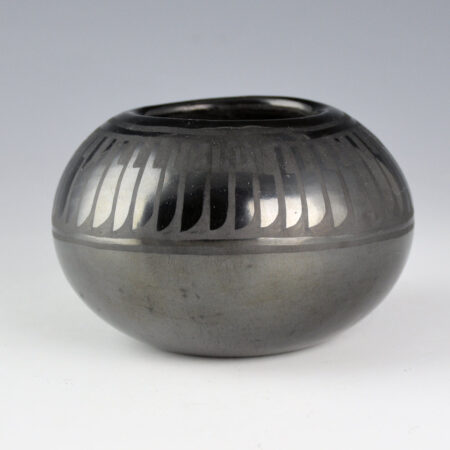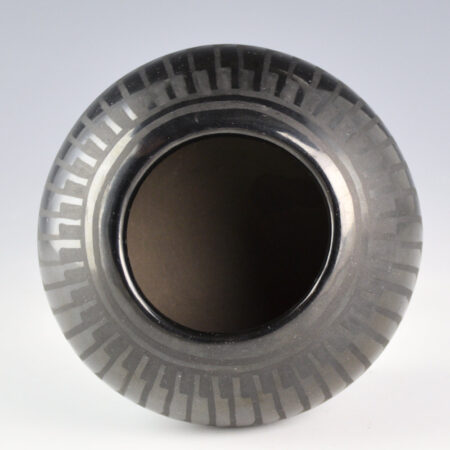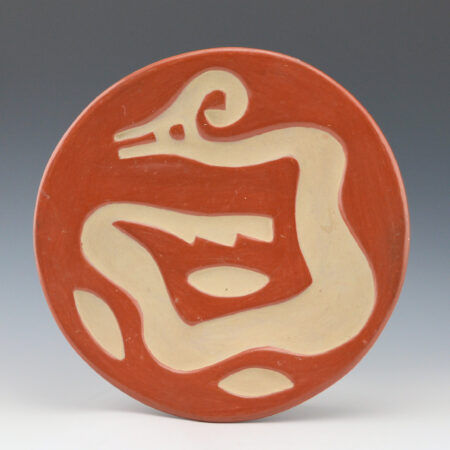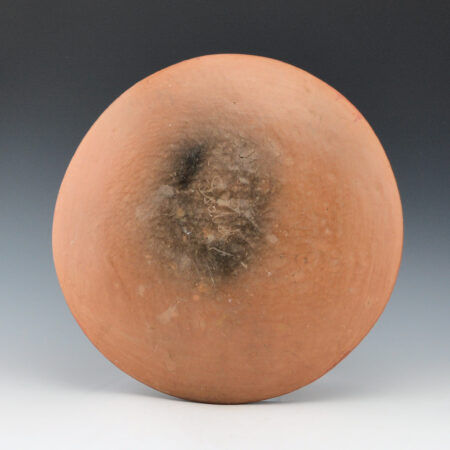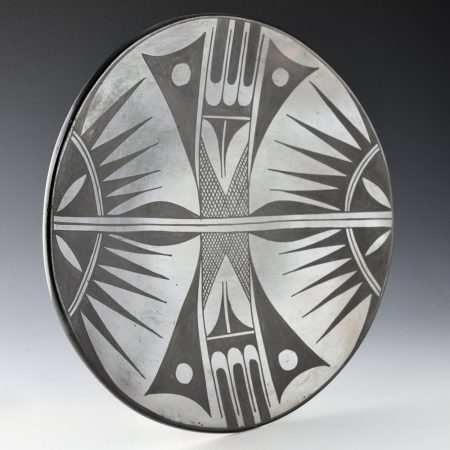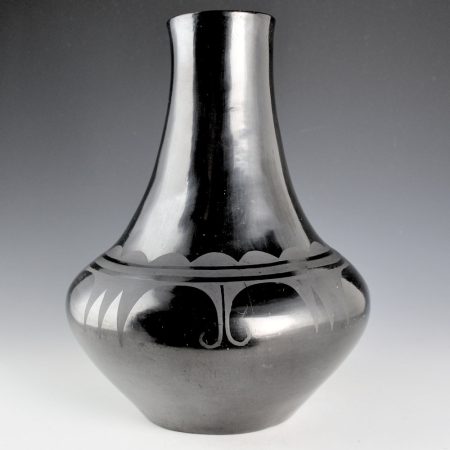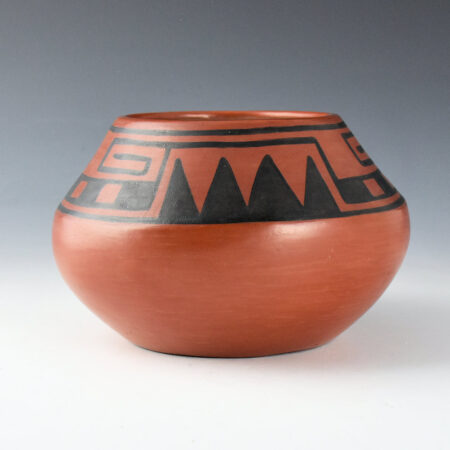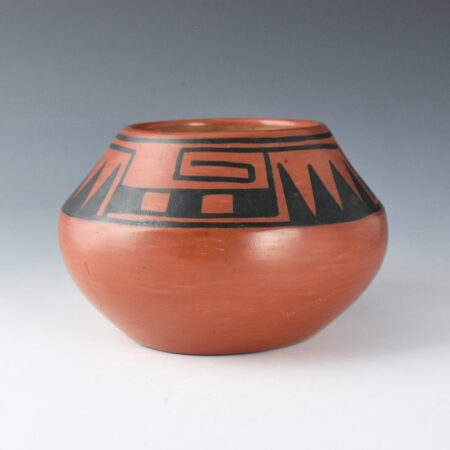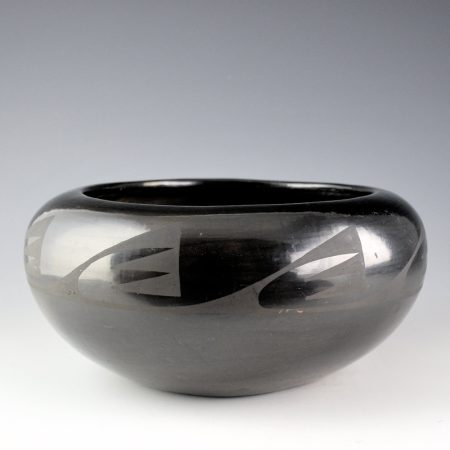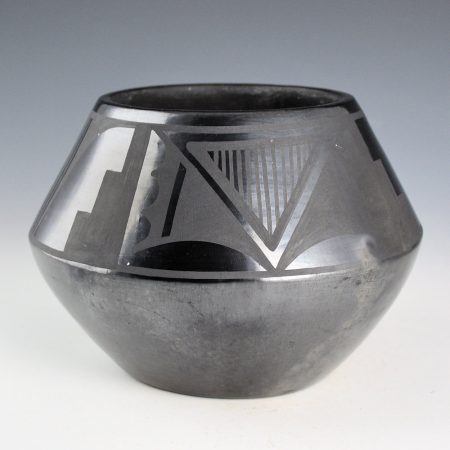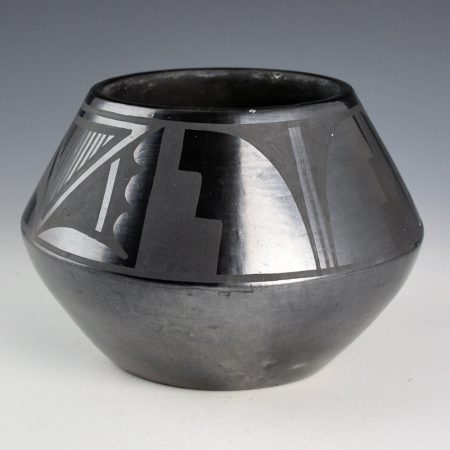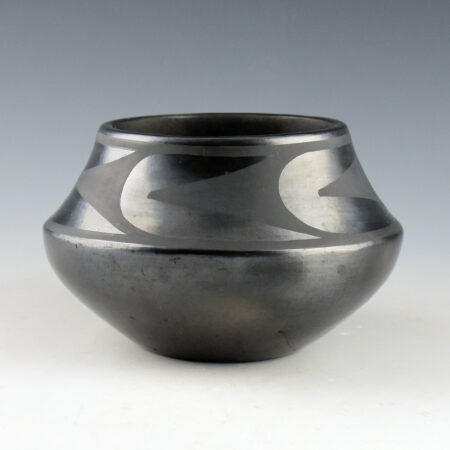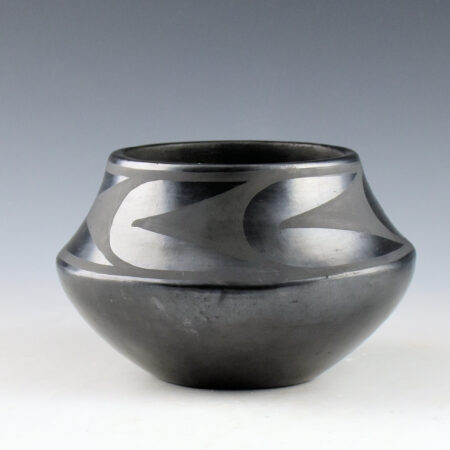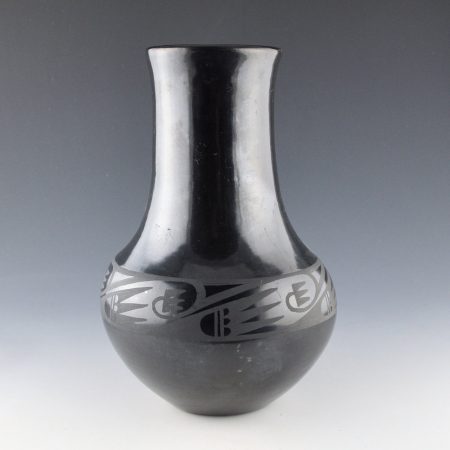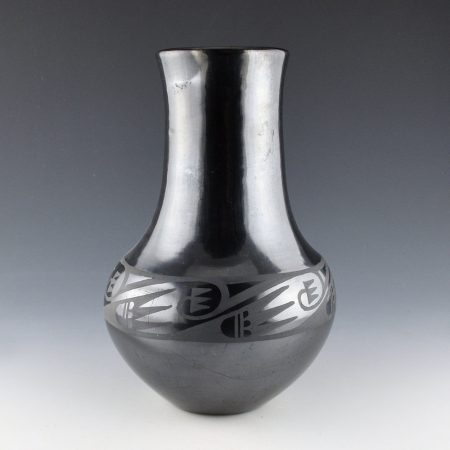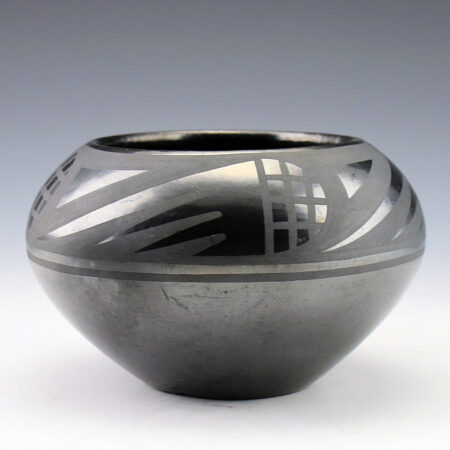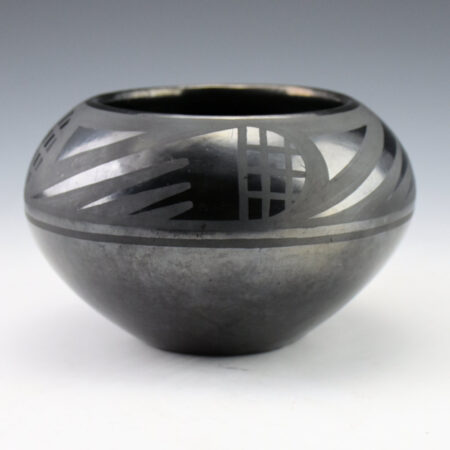San Ildefonso Pottery from the 1900s was produced in a small village with approximately thirty households. Pueblo pottery production had greatly declined in its creation for utilitarian purposes, and in the 1910 census, only eight women registered as potters by occupation. Around this time, ethnographers such as Kenneth Chapman and Edgar Hewitt began to encourage Early San Ildefonso pottery makers, and neighboring Pueblo potters to revive this dying art form. Those who were making pottery were encouraged to examine prehistoric vessels and revive their imagery. These designs, along with imagery from other Pueblo symbols, were used as a foundation for revival and innovation.
Around 1919-1920, Maria Martinez and her husband Julian Martinez discovered/invented the now-classic black-on-black pottery style. Despite the folklore that it was a secretive process, they quickly shared the information about making this style of pottery, and it revolutionized the economy and life of the pueblo. It was an exciting time for potters. They had an entirely new process for making pottery, new designs, new information, and a newly developing market for their folk art pottery in places such as Santa Fe and Taos, New Mexico. In this period of the 1920s to about 1940, the potters were unencumbered by “tradition” and looked beyond the Pueblos for inspiration. The result was amazing originality in the designs and shapes of their pottery.
In the Pueblos, women would typically make and polish the pottery, while the men would paint the designs. While Maria and Julian excelled as potters and promoters and eventually became world-famous, other potters such as Susana Aguilar, Ramona Gonzales, and Tonita Roybal were vital to the rapidly changing pottery movement. In the 1930’s the pottery of San Ildefonso would change further as a few men married women from other Pueblos. These women brought a new dimension to work already being created. Rose Gonzales (San Juan), Rosalie Aguilar (Picuris), and Juanita Gonzales(Taos) were among the first potters to begin carving into the clay to create their designs instead of painting imagery on the surface. They added another dimension to what could be done with the clay and created a stylistic change that still reverberates through the pottery market.
While there was a vibrancy to this period of work, it did not last long. The Great Depression of the 1930s and World War II reduced the demand for pottery, which had been growing throughout the 1920s. Many of these remarkable potters and painters passed away by the late 1940s, and many of their original shapes and designs disappeared from memory. It would be the next generation of potters starting in the 1950s, especially the 1960s, who would look to Maria Martinez, the one constant for nearly a century, as the bridge between the first pottery revival and arrival of Pueblo pottery as fine art. But for this next generation, the innovation and experimentation of their parents and grandparents would now be viewed as the traditions of the past. Click here to learn more!


